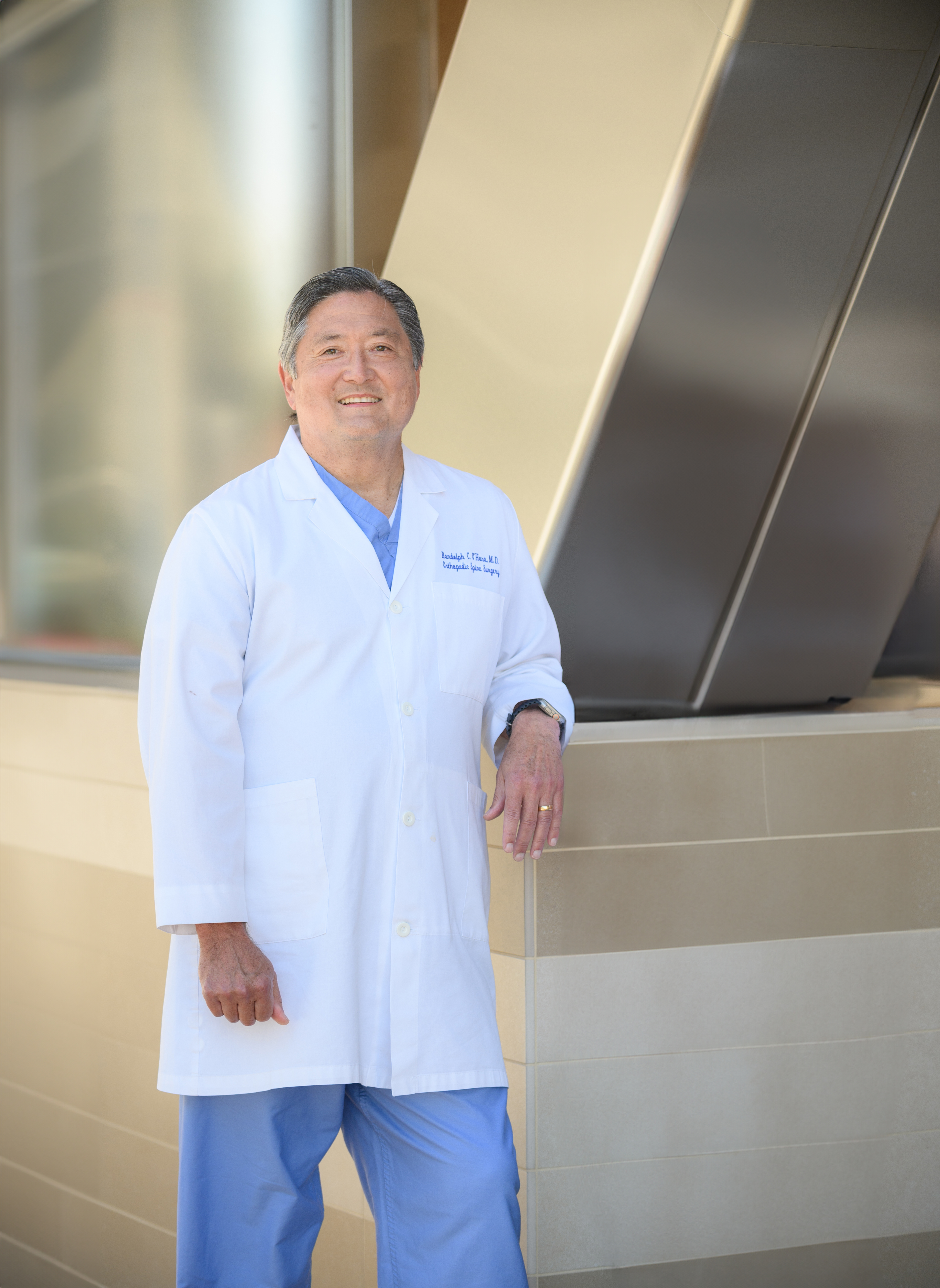“Exceptional care, exceptionally close” is the right choice for Dr. Randolph O’Hara.
Written by John Ferrari
Photographed by Peter Cooper
Exceptional care, exceptionally close. Torrance Memorial’s promise means a lot to South Bay residents and patients. It means even more to the hospital’s physicians when they become patients.
Whether you’re at the hospital for a routine physical exam, diagnostic procedure or surgery, doctors are the voice of authority. But doctors are patients too, with all the concerns any patient has.
“I thought I’d go in and my cholesterol would be a little high, and that would be that,” says Torrance Memorial orthopedic surgeon Randolph O’Hara, MD, referring to his annual (and overdue) checkup with his primary care physician, Rumi Cader, MD. His cholesterol was high, but Dr. Cader also noticed a high heart rate and ordered an electrocardiogram. It revealed atrial fibrillation (A-fib), an irregular and often very rapid heart rhythm.
A-fib is not uncommon, affecting some 5 million adults in the United States. Still, Dr. O’Hara was surprised. “I’m in my early 60s. I do cardio exercise regularly, on the elliptical and the rowing machine,” he says. “I had no symptoms.”
That’s a hallmark of A-fib—it’s often asymptomatic until a diagnostic test uncovers it. (A-fib also can be symptomatic. The most common symptoms include a noticeably rapid heartbeat or heart palpitations, dizziness, shortness of breath, weakness, fainting or fatigue—all of which are symptoms of many other conditions too.) A-fib is associated with a fivefold increase in the risk of stroke.
Dr. O’Hara also has a family history of heart attacks. With that in mind as well as his newly diagnosed A-fib, Dr. Cader referred Dr. O’Hara to a Torrance Memorial cardiologist, Eric Castleman, MD. Dr. Castleman ran several tests including a coronary calcium scan to identify any calcium buildup narrowing the coronary arteries, and an angiogram to reveal narrow or blocked arteries. The test results revealed significant coronary artery disease: three of Dr. O’Hara’s arteries were narrowed, two of them by 80%.
Dr. O’Hara was referred to cardiothoracic surgeon John Stoneburner, MD, who recommended a triple bypass and cardiac ablation surgery—a complex combined procedure but the best option. Dr. O’Hara could have opted for treatment at one of SoCal’s large university or research hospitals but chose Torrance Memorial for the staff’s experience and capabilities.
“I’ve been involved with Torrance Memorial for about 30 years,” he explains. “I know the staff very well, and I’ve seen the staff grow over the years. For me, having that relationship with the staff over all these years means I had complete confidence in them. Plus I know Torrance Memorial has state-of-the-art technology.”
Bypass surgery to treat blocked or narrowed arteries is a well-known surgery; cardiac ablation is less so. The procedure uses heat or cold to cause targeted micro-scarring in the heart, blocking the electrical signals that cause arrhythmia. While cardiac ablation can be performed as a minimally invasive procedure using a catheter inserted into the heart, “that doesn’t work as well on patients with persistent atrial fibrillation” like Dr. O’Hara, Dr. Stoneburner says.
Dr. Stoneburner couldn’t leave the A-fib untreated though. “It’s like the timing on a car,” he explains. “When the timing is off, the car loses power. It’s hard on the car’s engine; it won’t last as long. But A-fib is worse than just an engine timing issue because A-fib can cause blood clots, potentially leading to a stroke.”
In Dr. O’Hara’s case, Dr. Stoneburner was able to use a new technology: the EnCompass Clamp, which increases the speed and efficiency of surgical ablations. The surgery—both the bypass and the ablation—took less than four hours. Although he has been performing ablations for 10 years, “a lot of people don’t know tachycardia can be fixed with ablation—catheter-based or surgical,” Dr. Stoneburner says. “There are good options for surgical or minimally invasive procedures, and they work.”
Dr. O’Hara spent five days in the ICU recovering from his cardiothoracic surgery, which he says was “an absolutely humbling experience that gave me a whole new perspective. You rely on the ICU nurses and staff. They were fantastic. I think they’re that way with everyone—they have to be to do their jobs.”
That was last winter. Dr. O’Hara was able to return to work—albeit slowly—six weeks after his surgery. He was back to performing his own surgeries a month after that. That points to the beauty of preventive heart surgery, Dr. Cader says. Because Dr. O’Hara’s coronary disease was treated before it led to a stroke or heart attack, there are no limitations on his activities.
“Once someone has had a heart attack, there can be a weakness of the heart muscle that can lead to problems like congestive heart failure. By opening coronary arteries and preventing a heart attack, we’ve opened the patient’s options. For Dr. O’Hara there are no contraindications to do everything he wants to do.”
Dr. O’Hara is making some changes, though, to stay healthy—like improving his diet to lower his cholesterol level. “That’s a work in progress,” he admits. “I’m more aware of how I’m feeling and trying to keep from working too much, to balance a little more.”
Dr. O’Hara and his wife recently downsized, moving from Palos Verdes to Hermosa Beach. “We had a big house, but we had to drive everywhere,” he notes. “Now we can walk to restaurants and the beach. The house also happens to be right next to one of our offices.” Dr. O’Hara does plenty of walking: 5 miles along the beach most mornings before his workday begins.
Besides improving his physical health, the walks give him time to think and reflect. “Looking back, it was a great experience for me,” he says. “I have to give kudos to Dr. Cader. He’s the one who started the whole thing.”
For his part, Dr. Cader says this is the kind of case—and outcome—he likes to see. “We were fortunate to catch and treat the problems before Dr. O’Hara had a heart attack,” he explains. “Everyone 18 and older should have annual exams. Most people don’t have any notion they have cardiac risk factors—hypertension or hyperlipidemia—until they experience something serious later on, like a heart attack. These are the cases we love as physicians because we save lives this way—the ones where you prevent something potentially catastrophic. That’s the beauty of seeing your doctor and preventing these things from happening.”






